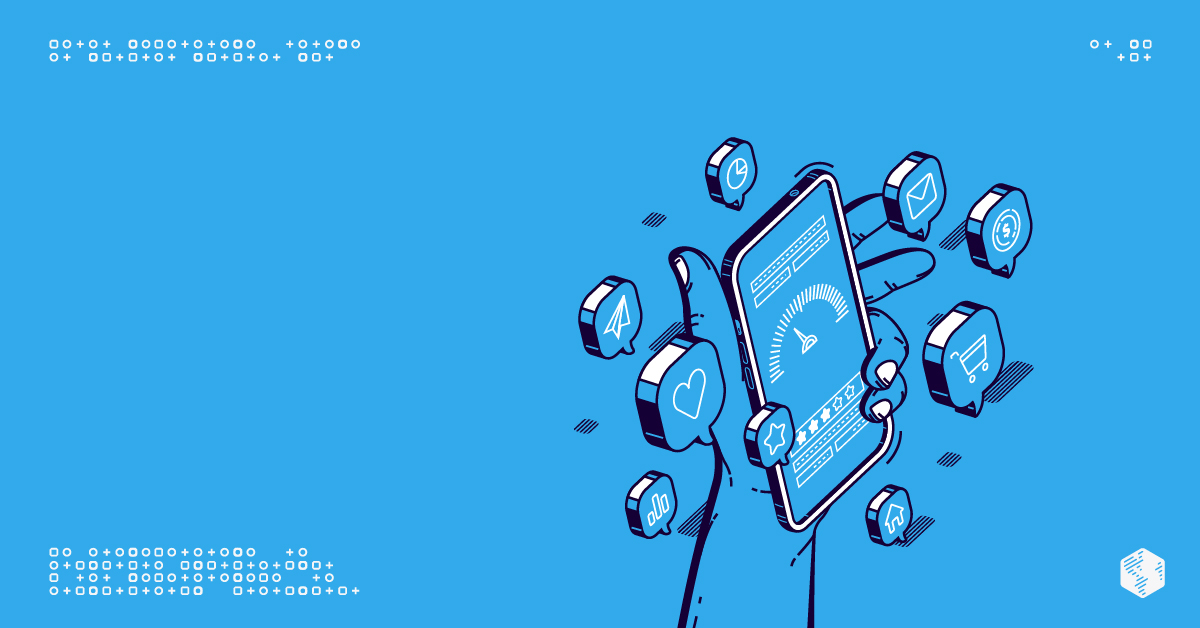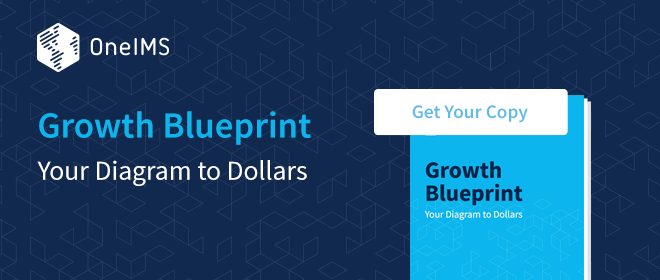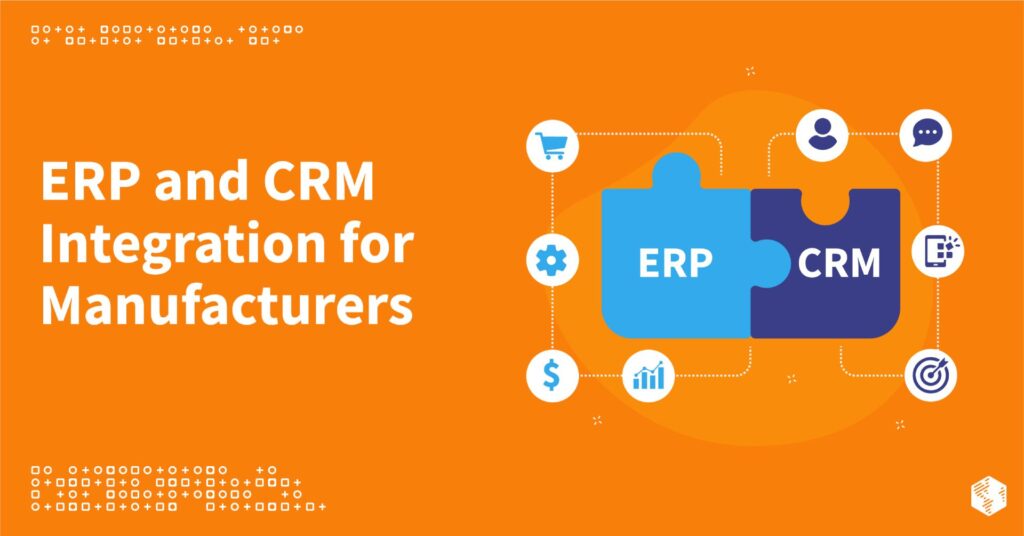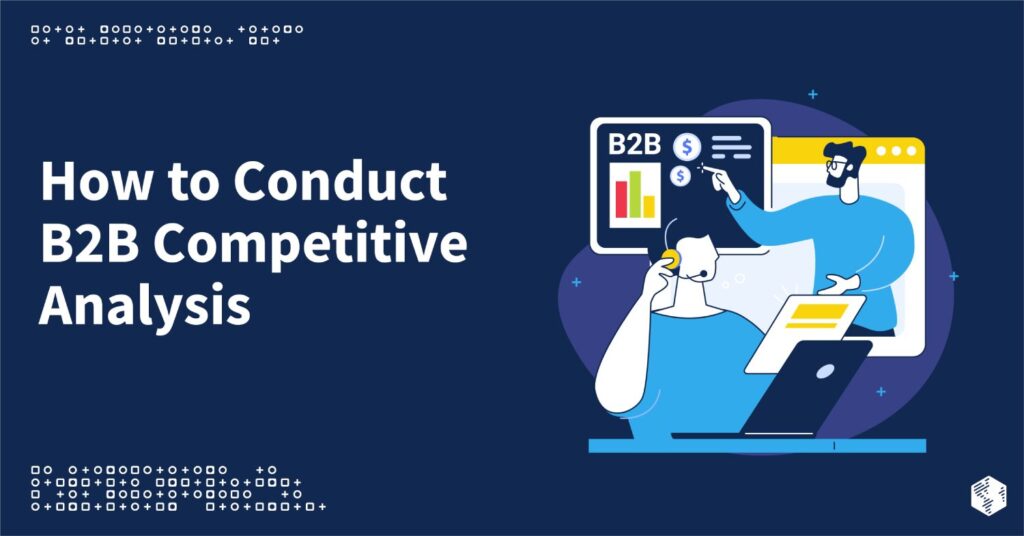Without implementing proper marketing techniques, a B2B business has a higher risk of sinking.
The most common question that comes up when discussing marketing strategies for B2B businesses is the debate of traditional vs. digital marketing.
So, what exactly are these two different kinds of marketing strategies? And, which one would be more suitable for your B2B business? OneIMS lays out the details in this article to assist you in making an informed decision.
What is Traditional Marketing?
Simply put, any marketing tactics that existed before the internet and that still do not require the assistance of online media are known as traditional marketing.
Traditional marketing is the foundation for any B2B business as even in the digital age, it continues to thrive, and bring in leads. Although the playing field is now shared with digital marketing, traditional marketing still remains relevant, especially for B2B businesses.
Traditional marketing can be broadly categorized according to the medium they use. These are – print, broadcast, direct mail, telephone, and alternative.
Let us take a more in-depth look into each of these types of traditional marketing channels.
1. Print Marketing
A predominantly visual marketing strategy, print marketing is used across different types of channels such as magazines, billboards, newspapers, journals, brochures, wall posters, and more.
This can work great for B2B businesses since there are several business magazines and journals in existence that your prospects might read. As for billboards, it can work well too if you put them up in the right location where you know your prospects would be. The same goes for brochures. For example, an automobile manufacturer can benefit greatly if they put up a billboard near the offices of automobile sellers and dealers, or if they distribute their brochures at an automobile convention.
2. Broadcast Marketing
Broadcast Marketing is an audio-visual marketing strategy that transmits information via broadcast media such as radio, television, and on-screen advertisements in movie theaters.
This, however, is not the best advertising option for B2B marketers. If you choose a general popular radio station, for example, there is a slim chance that your prospects are out there watching television or listening to the radio with the intention of looking for a solution for their business. For example, the CEO of a manufacturing company most likely isn’t listening to the radio looking for help with their supply chain management. Hence, chances are your ad will reach the wrong people, which is a huge waste of money, time, and effort.
3. Direct Mail Marketing
This advertisement can be implemented in the form of postcards, letters, catalogs, mailers, brochures, flyers, etc. Used extensively in B2B businesses, direct mail marketing is a fail-proof strategy that delivers information about your company to the exact people you are targeting. While many people think direct mail marketing is old school, data shows that this technique is still highly effective. In fact, according to a study by Go Inspire Group, it was discovered that direct mail campaigns resulted in purchases that were 5 times as large compared to email marketing strategies.
4. Telephone Marketing
Telephone marketing is a controversial topic since it traditionally involves cold calling customers to convince them to buy products and services, and uses other aggressive and intrusive sales tactics.
While directly contacting prospects may seem beneficial to the company, it ends up causing disruption to the client, which can turn them against your business.
However, the scenario can be very different if you already know the client and have spoken to them on call before. In that case, offering them your new products and services or offers on the phone can prove to be quite useful.
Nevertheless, it is advisable not to approach prospects or leads that you don’t know personally via cold calls as this can leave a negative impression on your business.
5. Alternative Marketing
This includes all the improvisational marketing strategies that you can come up with, personalized according to the needs of the companies you are approaching.
These can include conferences, guerrilla campaigns, sponsorships, meet-ups, affiliate campaigns, workshops, referral campaigns, and so on.
Referral marketing and affiliate marketing are some other traditional marketing methods that can work wonders for B2B businesses.
Having covered the basics of traditional marketing, we can now dive straight into digital marketing, which has taken the business world by storm.
What is Digital Marketing?
Any marketing strategy implemented online that the user engages with digitally can be called digital or online marketing.
This a less intrusive and more targeted way of reaching an audience. Every day more and more people are using the internet for their daily needs, and as the internet traffic increases so does the utility of digital marketing.
The fact that the digital advertising expenditure in the United States is estimated to increase by 85% between 2018-2023 goes to show the exponential growth and success rate of digital marketing.
As a B2B business, you can expect to reach more customers through digital marketing and generate better quality leads too.
Let us give some insight into the different touchpoints in digital marketing and find out which can be good options for B2B businesses.
1. Paid Search
Paid search, also known as pay-per-click (PPC) refers to the sponsored search results on the Google search page whenever a particular search term(s) is entered by the user. These ads are highly targeted and only charge when a user clicks on the sponsored link.
2. Search Engine Optimization (SEO)
SEO is meant to increase organic traffic to a company’s website by ranking the website higher on Google search results. This is done by optimizing the website by using various search engine generated guidelines and techniques. Keyword targeting also plays a major role.
3. Social Media Marketing
This can include everything that a business does on social media platforms from content sharing to interacting with audiences. Social Media is one of the digital platforms with the highest online traffic, and so it would be a mistake to ignore it. In fact, as a B2B business, leveraging social media with proper techniques can help to bring in high quality leads while also creating brand awareness.
4. Content Media Marketing
Content marketing increases brand awareness by using storytelling techniques and information sharing. It is an integral part of inbound marketing, which means your customers will come to you instead of you pursuing them. The catch is to keep creating attractive, informative, and useful content.
It isn’t as simple as it sounds, though, since there is a lot that goes into creating a good content marketing strategy.
It usually includes white papers, ebooks, videos, blog posts, articles, podcasts, and more. It should definitely be a part of your B2B marketing since it is cost-effective, can bring in a lot of good quality leads, and can establish you as a thought leader in your industry, which is an essential part of brand building.
5. Email Marketing
This strategy uses email as the main medium. You can use it to reach prospective clients with information and business offers as well as for nurturing your existing clients. Owing to its capability of personalization, email marketing is hands down one of the most effective ways of generating new and retaining existing clients for B2B businesses.
6. Mobile Marketing
Mobile marketing helps your products and services reach your target audience on their smartphone or mobile device. It is a more intimate form of marketing done through text messages, in-app advertising, and other online platforms. This kind of advertising is tailored according to the information collected regarding the target person through different means.
While this might work for B2B business, it is more suited for B2C companies.
Now that we have an idea about what traditional and digital marketing are, we can get to the advantages and disadvantages of using them for a B2B business.
Pros & Cons of Traditional Marketing
There is a reason traditional marketing has survived thus far and still continues to be popular in this digital age. It is indispensable in the marketing world and can prove quite effective if used correctly.
When it comes to making a decision between traditional vs. digital marketing, it is crucial to know the pros and cons of using traditional marketing for any B2B business.
Pros:
- From the consumer point of view, there is a factor of trust involved in well-known and much-used media. Getting your advertisement published in business magazines and journals or any other niche print media that your target audience is likely to read can prove extremely effective since these businesses are likely to trust the print media they usually consume.
- There is a scope of wide exposure to the public eye. TV advertising and outdoor displays like billboards and posters are useful in the raw brand building that is required when your firm is just starting out and needs publicity.
- It can work exceptionally well in a geographical niche market. For B2B businesses operating in a geographical market, traditional mass media marketing in the locality or state is more likely to raise brand awareness and bring in clients.
- Traditional marketing can work as a segmented and targeted marketing device. Direct mail marketing, for example, is a potent tool to get a specific offer delivered to a specific client.
- It can add a personal touch to client relationships which are crucial for B2B businesses. For instance, in selling high-value services, a personal letter or call can establish a close, tight-knit relationship with the client.
- Traditional marketing can offer an educative value that can generate leads in turn. Event marketing is great for promoting your brand image, services, and products through physical in-person interactions. Business events such as exhibitions, conferences, seminars, trade shows, etc. offer great opportunities to educate your prospects and build trust quickly. In fact, a study showed that the percentage of B2B marketers that found event marketing to be the most effective marketing channel was as high as 41%.
- It can offer certain free of cost promotions like referral campaigns which are the cornerstone of B2B marketing since it uses word of mouth and recommendations from existing clients to generate business.
- You can also join hands with other businesses through affiliate marketing which is a great way of spreading the word through other well-known and trusted brands.
Cons:
- One of the biggest drawbacks of traditional marketing is the high cost. When you factor in the total expenses of producing and distributing advertisements through multiple media channels, it racks up quite a high price.
- It is impossible to track the reach and impact of traditional advertisements since there is no way to keep an accurate record of the metrics and analytics of viewership and engagement rates.
- This can be a lengthy and time-consuming marketing process since it not only takes time to create and edit the advertising content but also to execute it through multiple media channels.
- Traditional marketing can be quite a hassle since you have to approach TV and radio channels, billboard agencies, mailing services, magazines and journals, other prospective affiliates, and organize events. It is highly labor-intensive, to say the least.
- This is also an irreversible marketing strategy that cannot be refined once it is out there. Once an advertisement or poster is released or a letter or postcard is sent, there is no going back and correcting an error or updating it for increased effectiveness.
- When it comes to referral campaigns you don’t have any control over your growth or the quality of leads. Not to mention, it is not in your hands as to whether a lead will convert or not.
- In affiliate campaigns, referral campaigns, and event marketing, tracking growth is a major issue.
- Traditional marketing offers hardly any scope for client interaction and feedback collection for the marketing efforts.
Pros & Cons of Digital Marketing
To make a sound decision of choosing between traditional and digital marketing, you need to be aware of the positives and the negatives of digital marketing for B2B businesses as well. Here they are:
Pros:
- Digital marketing can provide a global reach which is especially beneficial for businesses that operate online and are not confined to a geographical location.
- With tools like PPC and SEO, digital marketing offers the scope of both paid and organic lead generation through increased website traffic.
- There is a wide difference between the money you need to spend on traditional marketing vs. digital marketing. The latter is way cheaper with a statistically high return on investment (ROI).
- As a B2B business, you can get to know your clients and prospects better as well as track the effectiveness of an ad campaign or marketing strategy with web analytics and other available online metric tools. Digital marketing makes measuring growth and tracking consumer behavior very easy.
- Digital marketing is an efficient tool to target and conquer. With social media, for example, you can target prospective businesses within your niche and post content and paid advertisements to reel them in.
- It provides huge scope for the improvement of client relationships through interaction and feedback collection. Email marketing, for example, is a great way to stay in touch with existing clients and establish a close relationship of trust by providing value and asking for feedback through questionnaires.
- You can edit an ad or marketing content as many times as you wish and tailor it to the needs of the time. No damage is irreversible in the digital medium.
- Since the buyer is only a click away from making a purchase, the conversion rates are usually higher in digital marketing.
- Digital content has a high shareability which gives it the edge of going positively viral easily if you follow the right content marketing tactics.
Cons:
- The downside to global reach is a global competition. The bigger the niche market you are trying to operate in, the more will be the competition for grabbing the consumer’s attention. It is easy to get lost in the crowd, if you are not careful and stay on your toes at all times with your digital marketing strategies.
- Digital marketing is not something anyone can do by simply following a set of rules. You will need to hire trained professionals with the required experience and expertise who know the intricacies of online marketing.
- It is not a one-time set-and-forget kind of thing. A digital marketing strategy that worked even a month ago might not work today. Tools and trends change and platform algorithms keep updating rapidly. Hence keeping up-to-date is imperative.
- Digital marketing entails website optimization, creating advertising campaigns, and creating marketing content on a recurring basis which is, again, a very time-consuming and labor-intensive task.
- The transparency of pricing and business offers available to the prospect makes it easier for them to search the internet and compare your business with others in the same niche, after seeing an ad you posted.
- The internet can be destructive for your business if you’re not careful. Due to the shareability of digital media, any negative comment or feedback regarding your business made online can be seen by everyone and spread with lightning speed, ultimately negatively impacting your brand image.
- Being entirely technology-dependent, your ads and other marketing strategies would not work if there’s a glitch on the website, or a link or landing page does not work, or a call-to-action button does not do its job. There could be a variety of technical errors, not to mention the possibility of the internet crashing.
- Collecting and utilizing user data for business purposes is a controversial issue. If you don’t comply with the privacy and data protection guidelines, it can end you up in legal trouble.
Traditional Marketing vs. Digital Marketing
Now that we are done discussing the two kinds of marketing techniques and are aware of the pros and cons of each kind. We come to the most pressing question, which marketing technique would work best for your B2B business?
The clear answer is that there is actually no competition between traditional and digital marketing.
Why?
Because gone are the days of using a one-way marketing technique to generate leads for your business. Life isn’t that simple anymore. These are the times of multi-channel marketing, which essentially means combining traditional and digital marketing efforts to create a blended marketing strategy that works for your business. Today blended is the best marketing strategy for any B2B business.
Multichannel marketing is one of the most effective marketing strategies in this day and age. According to a study, 72% of consumers said they would prefer to connect with businesses through multiple channels.
When it comes to multi-channel blended marketing strategies there cannot be a one-size-fits-all. What works for a different company might not give you the same results.
For effective blended marketing efforts, it is imperative that you, as a B2B business owner know traditional and digital marketing inside-out and come up with the best multi-channel marketing strategy that is specific to your business model.
Create an Effective Blended Marketing Strategy for Your B2B Business
Instead of going off to weigh the benefits and drawbacks of traditional vs. digital marketing, it is advisable to execute marketing strategies based on your business’ specific needs and goals.
For help creating an effective blended marketing strategy that results in high quality leads and business growth, Contact OneIMS today. Our team of marketing experts can work with you to identify your needs and opportunities and provide a personalized strategy for your business.





































